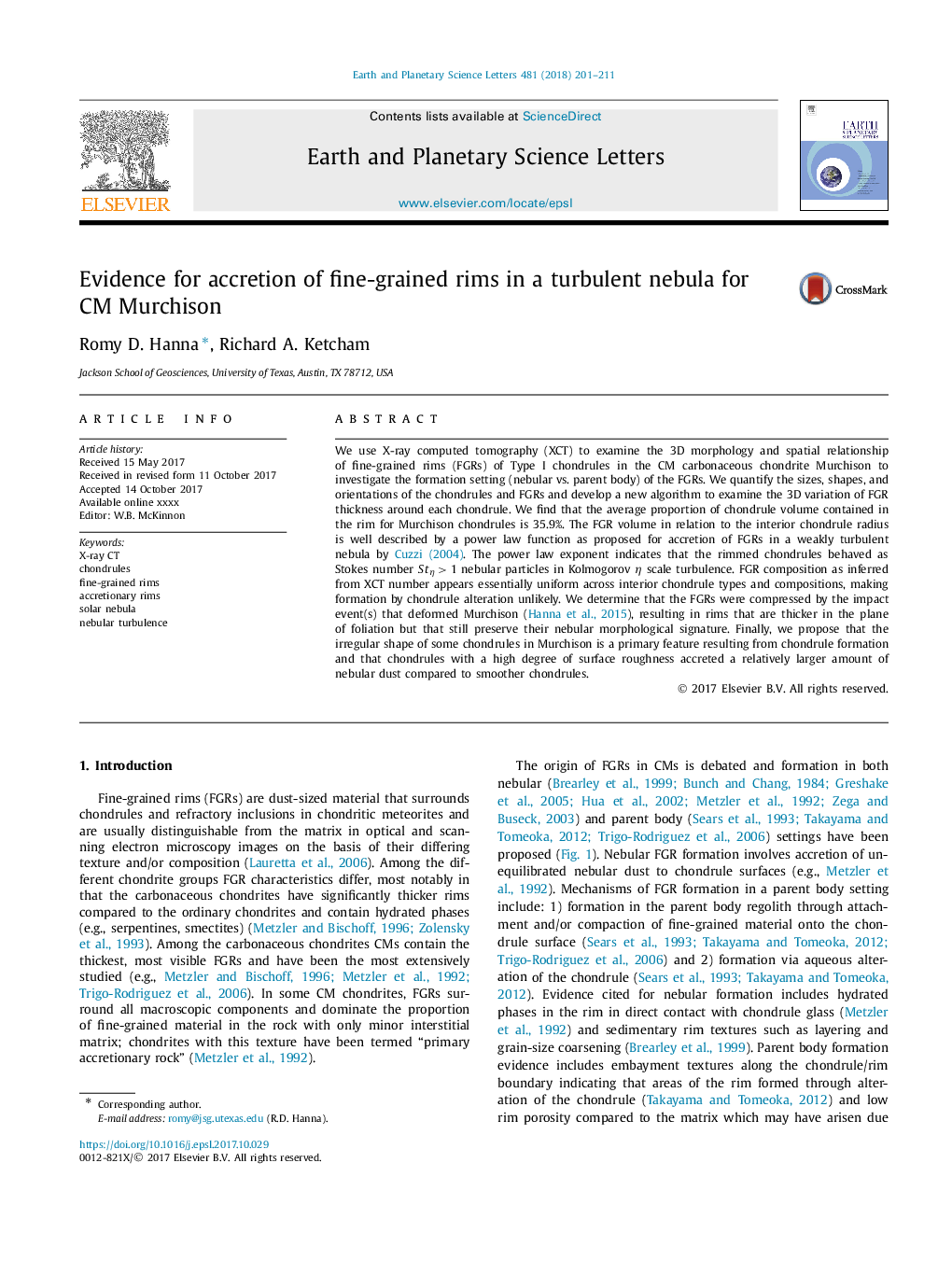| Article ID | Journal | Published Year | Pages | File Type |
|---|---|---|---|---|
| 8907342 | Earth and Planetary Science Letters | 2018 | 11 Pages |
Abstract
We use X-ray computed tomography (XCT) to examine the 3D morphology and spatial relationship of fine-grained rims (FGRs) of Type I chondrules in the CM carbonaceous chondrite Murchison to investigate the formation setting (nebular vs. parent body) of the FGRs. We quantify the sizes, shapes, and orientations of the chondrules and FGRs and develop a new algorithm to examine the 3D variation of FGR thickness around each chondrule. We find that the average proportion of chondrule volume contained in the rim for Murchison chondrules is 35.9%. The FGR volume in relation to the interior chondrule radius is well described by a power law function as proposed for accretion of FGRs in a weakly turbulent nebula by Cuzzi (2004). The power law exponent indicates that the rimmed chondrules behaved as Stokes number Stη>1 nebular particles in Kolmogorov η scale turbulence. FGR composition as inferred from XCT number appears essentially uniform across interior chondrule types and compositions, making formation by chondrule alteration unlikely. We determine that the FGRs were compressed by the impact event(s) that deformed Murchison (Hanna et al., 2015), resulting in rims that are thicker in the plane of foliation but that still preserve their nebular morphological signature. Finally, we propose that the irregular shape of some chondrules in Murchison is a primary feature resulting from chondrule formation and that chondrules with a high degree of surface roughness accreted a relatively larger amount of nebular dust compared to smoother chondrules.
Keywords
Related Topics
Physical Sciences and Engineering
Earth and Planetary Sciences
Earth and Planetary Sciences (General)
Authors
Romy D. Hanna, Richard A. Ketcham,
